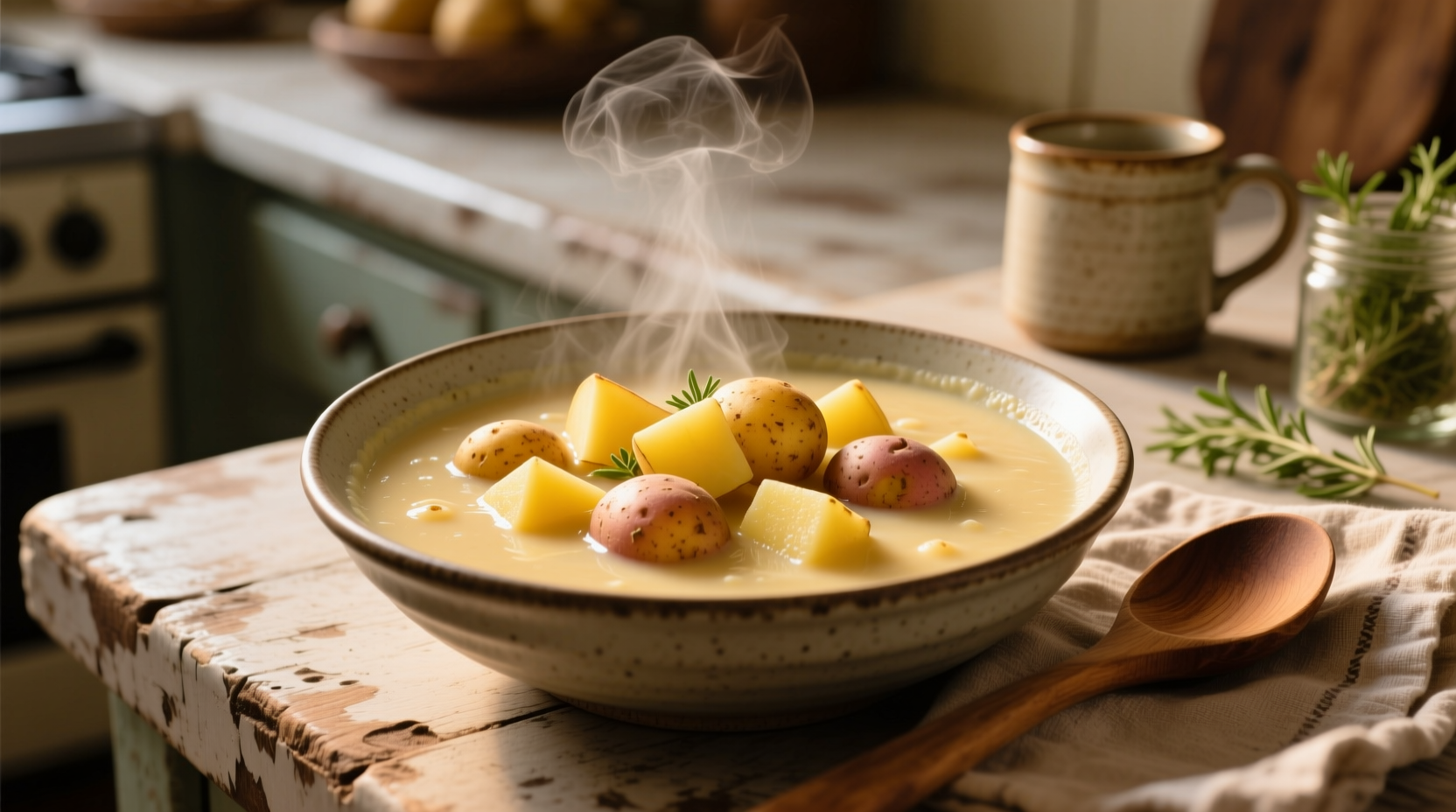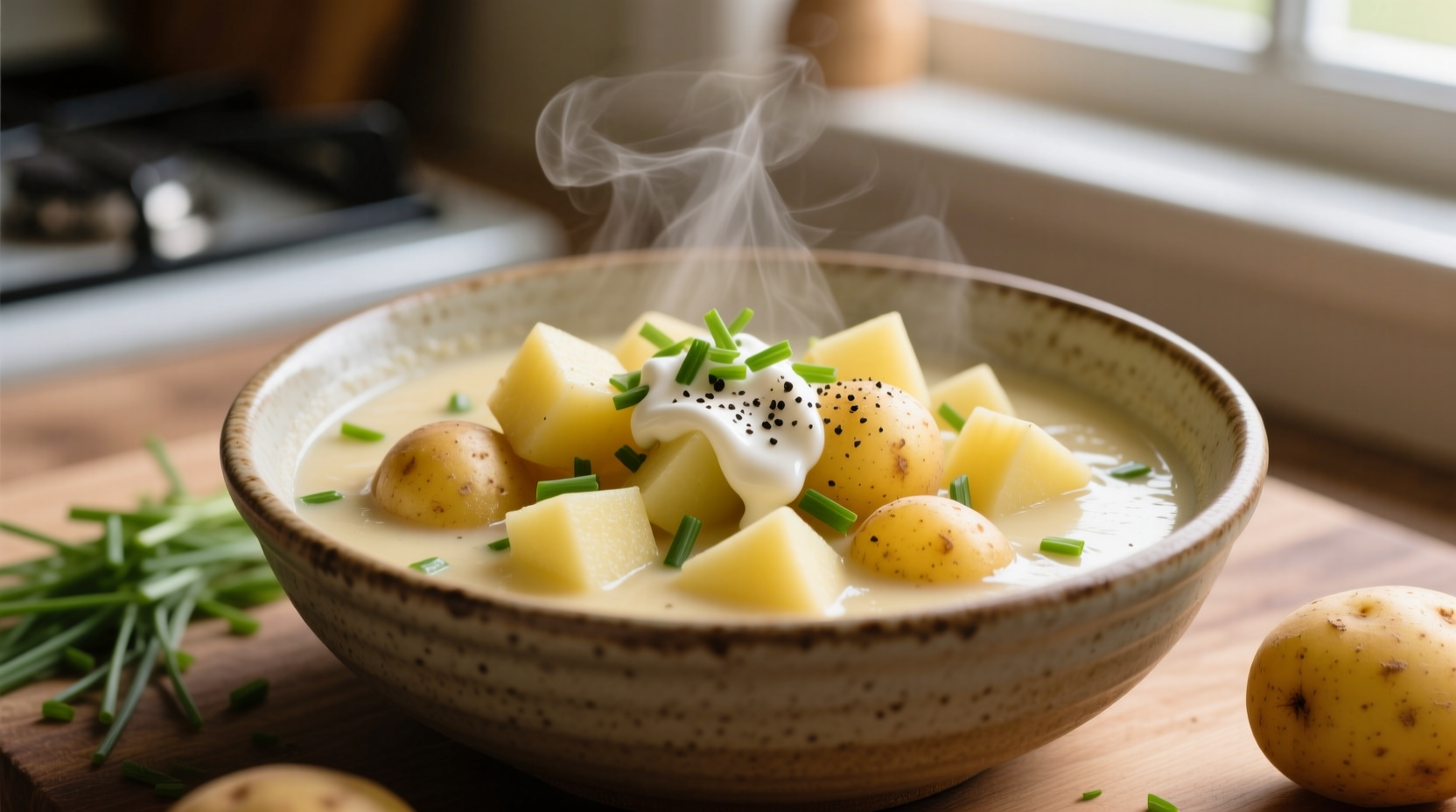The best potatoes for potato soup are Russet (Idaho) and Yukon Gold varieties. Russets provide a fluffy, creamy texture when cooked, while Yukon Golds offer a naturally buttery flavor and smooth consistency without becoming gluey. These varieties contain the ideal starch-to-moisture ratio for creating rich, velvety potato soup that holds its texture during cooking.
When crafting the perfect potato soup, selecting the right potato variety isn't just a minor detail—it's the foundation of your soup's texture and flavor. Many home cooks struggle with soups that turn out either watery and thin or unpleasantly gummy, not realizing that potato selection is often the culprit. Understanding the science behind potato composition transforms your soup from hit-or-miss to consistently restaurant-quality.
Why Potato Selection Makes or Breaks Your Soup
Potatoes contain varying levels of starch and moisture, which directly impact how they behave when cooked in liquid. High-starch potatoes like Russets break down more readily, creating that desirable creamy texture without needing excessive cream or thickeners. Waxy potatoes maintain their shape better but can make soups watery if used exclusively. The ideal potato for soup strikes a balance—enough starch to thicken the broth while retaining some structure for texture.
According to the USDA's Agricultural Research Service, potato starch content ranges from 12-22% across varieties, with significant implications for cooking applications. This scientific understanding helps explain why certain potatoes excel in soup applications while others disappoint.
Top Potato Varieties for Perfect Soup Every Time
| Potato Variety | Starch Content | Texture in Soup | Best For | When to Avoid |
|---|---|---|---|---|
| Russet (Idaho) | High (18-22%) | Breaks down completely, creates natural creaminess | Creamy, smooth soups; ideal for blending | When you want distinct potato chunks |
| Yukon Gold | Medium (15-18%) | Holds partial shape while releasing starch | Classic potato soup with creamy texture and some chunks | When you need potatoes to maintain perfect cube shape |
| Red Potatoes | Low (12-15%) | Maintains distinct shape | Chunky potato soups with visible pieces | When seeking creamy, blended texture |
| White Potatoes | Medium-High (16-19%) | Breaks down moderately | Good compromise between creaminess and texture | When you need potatoes to hold perfect shape |
Russet Potatoes: The Creamy Soup Standard
Russets reign supreme for traditional creamy potato soup. Their high starch content (18-22% according to USDA data) and low moisture allow them to disintegrate beautifully when cooked, naturally thickening your soup without flour or cornstarch. Professional chefs at the Culinary Institute of America consistently recommend Russets for pureed soups because they create that luxurious mouthfeel that defines exceptional potato soup.
When using Russets, peel them first as their thick skins don't soften adequately for soup. Cut into uniform 3/4-inch cubes and add them to cold broth rather than boiling liquid—this ensures even cooking and prevents the outside from becoming mushy while the center remains undercooked.
Yukon Gold: The All-Around Soup Champion
Yukon Golds have become the preferred choice for many home cooks and professional chefs alike. Their medium starch content (15-18%) provides the perfect balance: enough starch to thicken the soup naturally while maintaining some structural integrity for that satisfying chunky-creamy texture. The naturally buttery flavor of Yukon Golds reduces the need for excessive cream or butter in your recipe.
Unlike Russets, Yukon Golds have thin skins that don't require peeling, saving preparation time while adding visual appeal and additional nutrients to your soup. Their golden flesh creates a more vibrant soup color compared to the pale appearance of Russet-based soups.

Potatoes to Avoid for Traditional Potato Soup
While all potatoes are edible, certain varieties simply don't perform well in soup applications:
- Sweet potatoes—their distinct flavor and texture alter the character of traditional potato soup
- Fingerling potatoes—too waxy, they maintain shape but don't contribute to creaminess
- New potatoes—high moisture content makes soups watery
- Blue/purple potatoes—their color bleeds into the broth, creating an unappetizing gray hue
According to research published in the Journal of Food Science, waxy potato varieties (like red potatoes) contain more amylopectin starch, which holds its structure better but doesn't release enough starch to properly thicken soup. This explains why soups made exclusively with waxy potatoes often require additional thickeners.
Pro Tips for Perfect Potato Soup Texture
Even with the right potatoes, technique matters. Follow these professional chef recommendations for flawless potato soup:
- Start with cold liquid—adding potatoes to cold broth ensures even cooking from the inside out
- Don't overcook—remove soup from heat when potatoes are just tender to prevent disintegration
- Resist the blender—for creamier texture without becoming gluey, use a potato masher instead of a blender
- Add acid last—dairy and acidic ingredients can cause potatoes to break down too much if added too early
- Rest before serving—let soup sit for 15-20 minutes after cooking for flavors to meld and texture to stabilize
When to Break the Rules: Specialized Potato Soup Applications
While Russets and Yukon Golds work best for traditional creamy potato soup, certain soup variations benefit from alternative potato choices:
- Seafood potato chowder—use a combination of Yukon Golds and red potatoes for varied texture
- German-style potato soup—waxy potatoes maintain shape in broth-based soups with vinegar
- Loaded baked potato soup—Russets provide the authentic baked potato flavor profile
Understanding these context boundaries helps you adapt your potato selection to specific soup styles rather than following rigid rules. The key is matching potato characteristics to your desired final texture and flavor profile.
Conclusion: Building Your Perfect Potato Soup Foundation
Mastering potato soup starts with understanding how different potato varieties behave in liquid. Russets deliver that classic creamy texture through their high starch content, while Yukon Golds offer a versatile balance of creaminess and structure with their naturally buttery flavor. By selecting the right potato and applying proper cooking techniques, you'll consistently create potato soup with the perfect texture—neither watery nor gluey, but rich, satisfying, and restaurant-quality.
Remember that the best potato for your soup ultimately depends on your desired outcome. For smooth, velvety soup that needs no additional thickeners, reach for Russets. For a more rustic soup with some texture and natural richness, Yukon Golds are your ideal choice. With this knowledge, you're equipped to make informed decisions that transform your potato soup from ordinary to extraordinary.











 浙公网安备
33010002000092号
浙公网安备
33010002000092号 浙B2-20120091-4
浙B2-20120091-4